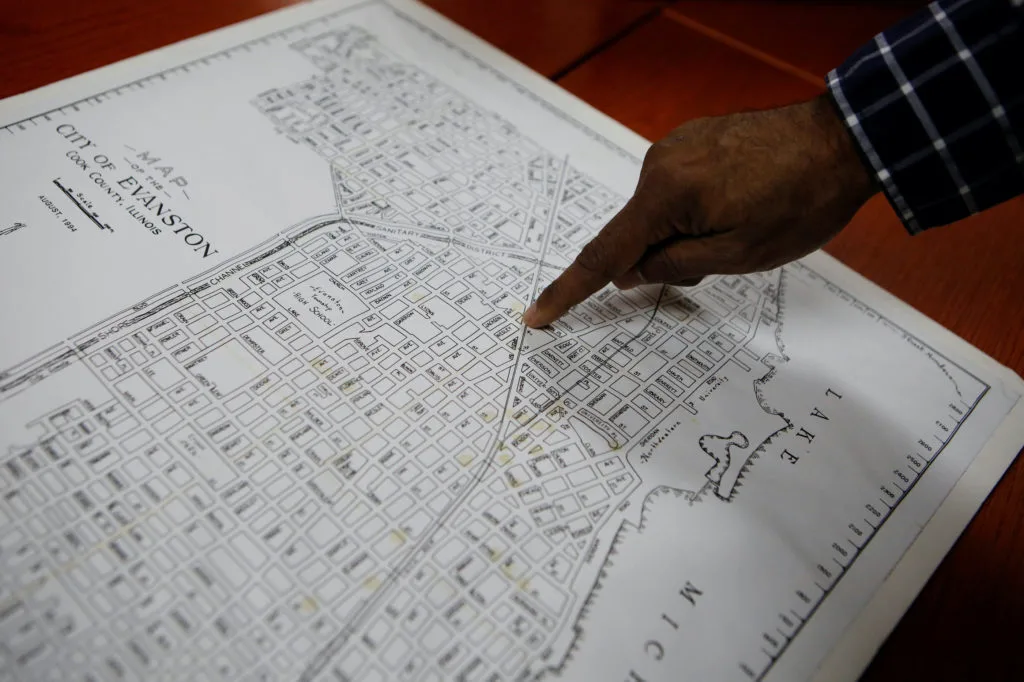
In the 1930s, the U.S. government introduced the practice of redlining — categorizing neighborhoods based on the ethnic and racial backgrounds of the people who lived there, with areas primarily occupied by people of color identified as high-risk for mortgage lenders. The policy led to further housing segregation and decades of disinvestment in health care, schools, and other basic services and infrastructure, taking a disproportionate toll on Black communities.
While redlining was officially discontinued in the 1940s, its legacy continues to harm marginalized people today, according to a new study published Tuesday in JAMA Network Open.
Among veterans living with cardiovascular disease, those who lived in historically redlined neighborhoods (rated “D”) had a 13% higher risk of dying from any cause and a 14% higher risk of experiencing a major adverse cardiovascular event compared to those who lived in historically white, wealthy areas, according to the study. It’s the first major national survey to look at the link between redlining and comprehensive cardiovascular risk, offering the latest evidence of how historical structural racism can affect health for generations.
“Redlining happened … almost a century ago, and we’re showing that it still has implications, and it should give us pause,” said Sadeer Al-Kindi, one of the study’s lead authors and a researcher from Harrington Heart and Vascular Institute at University Hospitals and Case Western Reserve University. “Because now, when we put policies — especially policies that are related to segregation, gentrification, anything like that where it talks about remapping areas — this may have a long, lasting legacy of health impacts, specifically on cardiovascular [health].”
The analysis builds on similar studies looking into the impact of redlining on smaller geographic areas, such as an April 2023 investigation into how redlining contributes to stroke risk in New York City, as well as a national study showing a greater risk for adverse cardiovascular outcomes at the neighborhood, rather than individual, level.
In this retrospective cohort study, researchers looked at data from about 80,000 U.S. veterans who had received care between 2016 and 2019 for coronary artery disease, peripheral vascular disease, or stroke, and who lived in areas that had previously been categorized during the 1930s by the Home Owners’ Loan Corporation (HOLC) created under the New Deal.
The researchers followed up with these veterans for a median of four years to see whether they had experienced an adverse cardiovascular event. Their statistical models adjusted for factors like age, sex, race, and baseline health, removing major traditional variables such as diabetes, high blood pressure, and high cholesterol. They also adjusted for factors such as pollution and neighborhood deprivation — what Salil V. Deo of Louis Stokes Veteran Affairs Hospital, one of the study’s co-authors, calls “unseen” risks.
Other studies have found that historically redlined communities continue to experience worse health outcomes and lower environmental quality, according to environmental epidemiologist Joan Casey, an adjunct assistant professor at Columbia University Mailman School of Public Health who was not associated with the study.
In the 1930s, “Grade D neighborhoods were poorer, had more industry and pollution, lower quality housing, and immigrant populations and Black individuals,” Casey said via email. “Redlining helped solidify structural racism and prevented wealth accumulation (via home ownership) in specific communities. That can still affect health today.”
The study is also noteworthy because Black Americans already face disproportionately high rates of cardiovascular problems, according to Mahasin Mujahid, head of epidemiology at the UC Berkeley School of Public Health. “To truly understand the long-lasting effects of slavery and its aftermath, which include discriminatory policies like redlining, we must delve into the intergenerational impacts,” she said via email.
While the study’s authors note that their findings might not be generalizable to non-veterans, it was important that they use the large national dataset of veterans available at the census-tract level, as opposed to the larger zip code areas captured by Medicare data. Focusing on veterans also reduced the bias that comes from using health care data from the general population, which excludes people who don’t have insurance. By contrast, all veterans generally have access to health care through their Veterans Affairs insurance, regardless of their income or current employment status.
Countering the lingering effects of redlining means getting creative with policy as well as on-the-ground initiatives, according to Al-Kindi. Connecting patients to better food access and planting trees in disadvantaged neighborhoods are simple actions that can help, but much larger solutions are needed, too.
“This paper is so exciting because it tries to capture structural barriers, long-term historical factors we need to account for, or we could make things worse than they already are,” said Hayden Bosworth, a professor of population health sciences at Duke University School of Medicine who co-authored a commentary on the study. “If you think about it, generation after generation, we know that wealth accumulates. The equivalent is that if generation after generation keeps lacking resources, it keeps on building and building, and makes it that much harder to get out of the hole.”
This article is reproduced with permission from STAT. It was first published on July 13, 2023. Find the original story here.

